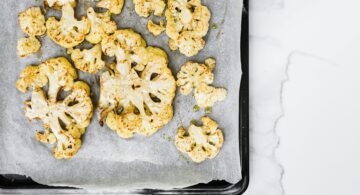Are Essential Oils Safe for Internal Use?
When it comes to essential oils, the phrase, “Too much of a good thing” even applies to them, as wonderful as they are.
There are hundreds of articles that speak of the amazing benefits of these natural medicines called essential oils.
- Rub peppermint oil on your temples for a headache.
- Sniff lavender oil to induce sleep
- Drink grapefruit oil in water to curb appetite.
Most people are ready and willing to follow these recommendations because essential oils are good and natural. And if they are all-natural, then they can’t hurt you, right?
Wrong! Unfortunately, few people are addressing the safety concerns and proper uses of these powerful remedies.
I’m not against using essential oils. I love my oils and I use them often! I promote their use to others and I am excited to see them skyrocket to popularity.
What disturbs me is that among the growing essential oil subculture, there is an enormous amount of misinformation about how to use essential oils.
Many who use essential oils have little information on how to employ them safely. The extent of their essential oil knowledge is often limited to what they have learned from a friend who uses them or what they read in a blog post written by an essential oil consultant.
In my experience, many who promote unconventional applications of essential oils have minimal aromatherapy training and represent multi-level marketing companies who themselves are promoting these controversial methods..
An individual selling essential oils in a multi-level marketing scheme does not possess the same knowledge or background on the safety of essential oils that a licensed aromatherapist does.
I place no blame on the consultants who sell the oils and have created an income for their families by making a business for themselves. These well-intentioned consultants trust and believe in the companies they work for. Furthermore, they have no doubt experienced positive health improvements from using essential oils.
Unfortunately, a multi-level marketing company’s quest to sell more oil often motivates them to blur the truth and exaggerate benefits. I believe that these companies produce quality oils, some of which I personally use. But, I cannot agree with all of their suggested uses.
Hazardous Uses of Essential Oils
There are two hazardous applications of essential oils that are currently promoted as safe. These two unorthodox methods have never, in the history of aromatherapy, been promoted by certified aromatherapists.
The two questionable methods of using essential oils are:
- Neat (undiluted) application
- Daily internal use (specifically of undiluted oil)
The Dangers of Neat Application
Neat application is the use of essential oils that are not diluted. This method of application is rarely, if ever used in aromatherapy. If neat application is performed, it should be:
- Supervised by a qualified professional.
- Used for a very short period.
- Administered for an acute and very traumatic situation.
Most of the time neat oils can be applied without any apparent issues. However, stronger is not always better when it comes to essential oils. Undiluted oils are extremely potent and concentrated. “Hot” oils like cinnamon and oregano are so potent, that they can cause second degree burns if applied undiluted![1]
The recommended dilutions are as follows[2]:
- 1% dilution (1 drop per tsp of carrier oil) – For children under age 6, pregnant women, elderly adults, those with sensitive skin, compromised immune systems, or other serious health issues. This is also the dilution you want when you are massaging over a large area of the body.
- 2% dilution (2 drops per tsp of carrier oil) – Ideal for most adults and in most situations. This is also a good dilution for daily skin care.
- 3%-5% dilution (3-5 drops per tsp of carrier oil) – Best used short-term for a temporary health issue, such as a muscle injury or respiratory congestion. Up to 10% dilution can be used depending on the health concern, the health and age of the person, and the oils being used.
- 25% dilution (25 drops per tsp of carrier oil) – A dilution of this strength is occasionally used for things such as muscle cramps, bad bruising, or severe pain.
Oils that are not consider “hot” may not irritate the skin immediately, but over time, their use in neat form can cause something called sensitization. A sensitization reaction is an allergic reaction to the oil. The body’s immune system reacts to the oil and causes a rash on the skin. A sensitization reaction can also cause inflammation, difficulty breathing, nausea, headache and even anaphylaxis.
Caution: Once sensitization occurs, it is permanent! The oil causing the reaction can never be used again without the same response!
The good news is that avoiding sensitization is easy! Appropriately dilute essential oils and only use them when needed. The bonus in diluting essential oils is that they last much longer and in the end will save you hundreds of dollars!
Dangers of Daily Internal Use of Essential Oils
My biggest essential oil concern is using them internally. Daily or casual use is unnecessary and potentially harmful to the body. Just as you would (or should) exercise caution and research when using pharmaceuticals, you should practice the same careful research when using essential oils. Essential oils are profoundly powerful, which makes them capable of both great good and great harm.
Essential oils are medicine, not a vitamin or essential nutrient for the body. If someone takes antibiotics when they don’t have an infection or an antidepressant when they’re not depressed, these medicines will cause harm, not help!
The same principle applies to these powerful medicines known as essential oils. Though these natural oils have tremendous healing potential, used when not needed and they cause harm.
Taking essential oils daily or preventively is completely unnecessary.
- They can cause harm to internal organs in the body.
- Essential oils are extremely concentrated and can cause unneeded stress on the liver.[3]
- They can also cause burns to mucous membranes of the digestive tract!
- Some oils can also cause serious drug interactions with medications such as blood thinners.[4]
I’ve seen many people claim that only “therapeutic” grade oils are safe for internal consumption. Unfortunately, this is another marketing ploy invented by certain essential oil companies to promote their oil as superior and safer than other oils.
Essential oils are not regulated and there is no process that a company can go through to become certified as “therapeutic grade.” The companies that claim they have therapeutic grade oils are behind the push towards internal use. Using essential oils internally means more they sell more oil, which increases their profits! Let’s get one thing straight: the term therapeutic grade provides marketing clout rather than signifying that the oils meet a regulated quality standard.
I’ve read articles that promote internal ingestion of many different essential oils. Although many of these oils may not cause immediate harm, the long term effects of these oils taken internally has not been studied. The FDA does have a list of essential oils, which are “generally recognized as safe” for use as food or drink. It is always best to try inhalation and topical application before resorting to internal use.[5]
Many suggest putting drops of essential oils in water to drink. This is the absolute worst way to ingest essential oils! Oil and water do not mix! Therefore, the oil is not diluted with water. The oils remain in their concentrated state and can cause burning and irritation to the very sensitive mucous membranes in the throat and through the entire digestive tract.
If you choose to take essential oils internally, please do so when needed and not on a daily basis. Also remember that dilution is very important. You only need 1-2 drops in a capsule full of an edible carrier oil like coconut oil or honey.
Oils like peppermint, ginger and oregano have benefits when taken internally for very brief periods of time. However, there aren’t enough studies about the effects of essential oils on the flora of the intestinal tract or other organs to adequately determine their safety long-term. Another concern is the possible interaction between certain essential oils and certain medications (drug interactions).
For those who are taking pharmaceuticals, it is important to know how using natural “remedies” might interact or contradict their effect. Although there is very little research on actual drug interactions with essential oils, we are aware that some individual components of essential oils may slow down a process or potentiate it. The following information on just a few essential oils in an effort to help you make an informed, responsible decision about whether or not to use essential oils alongside allopathic medications.
- For example, wintergreen oil also has blood-thinning effects similar to aspirin. People who take blood thinners such as warfarin, or those who are sensitive to aspirin are advised against taking wintergreen essential oil. Ingestion could be fatal.[6]
- Essential oils containing farnesene and alpha-bisabolol such as balsam poplar, german chamomile and blue tansy inhibit some metabolizing enzymes (CYP2D6) and may possibly potentiate the actions of some antidepressants.[7]
- Peppermint is a calcium channel blocker and may alter the effect of medication taken orally.
I have used diluted oregano oil internally for many years to treat infections like sinusitis. However, I was always taught that this powerful antibacterial oil can also kill off beneficial gut bacteria. I only use it briefly and follow it up with a strong probiotic. As a holistic practitioner who believes our gut flora is the most vulnerable and significant factor governing our health, I believe it is far easier to kill beneficial bacteria than to replace it.
Sadly, I don’t see many “use with caution” recommendations on essential oils. Rather, I see the opposite.
I once saw a picture of a lady in an essential oil Facebook group. She had 15 bottles of essential oils alongside a pile of empty capsules. The caption read, “My daily routine.” Not one person in the group gave her a warning of caution or asked her why she was taking so many oils. Instead, the comments encouraged her dedication and applauded her commitment to health!
The woman swallowing 15 essential oils a day believed she was doing something healthy for her body. Those in her “essential oil community” believed she was solving her problems. This is just one example of the gross misrepresentation of the use of essential oils!
When it comes to conventional medicine and natural remedies alike, first, do no harm. That’s why ingesting essential oils should be at the end of your natural remedies list. Start with options that have no potential for harm!
When Essential Oils are Safe
If you are considering internal essential oil use, there are oils that are much more safely ingested than others. Remember, ingestion is not completely contraindicated. It is frequent and large doses that pose the biggest danger. Every time you chew gum, eat confectionery, and even brush your teeth, essential oils were the flavoring agent. Every time you eat food simmered with dried or fresh oregano, basil etc. the characteristic flavor from the essential oil contained in the plant lingers on. When you cook with an essential oil you are diffusing the oil into the food and typically only a few drops are needed. These are safe doses of oils that don’t cause complications in the body.
Though using essential oils internally for medicinal reasons is controversial, there are particular oils that if used in diluted form and for short periods of time can treat certain acute health issues.
Some examples of these safer internal uses of essential oil use include:
- Oregano oil or an antimicrobial blend such as Thieves oil diluted to 10% with carrier oil, then put into a capsule or mixed with a tsp of honey. This is often used for sinus infections, respiratory infections and the flu. Take no longer than 3 days.
- 1 drop peppermint or ginger oil mixed with 1 tsp of honey for nausea.
When I spent some time in Paris in my early twenties, I quickly realized that floral flavors, like rose and lavender, were quite popular in Parisian candies and desserts. Being the unconventional person that I am, I found myself enjoying these unique flavors in my foods. However, once returning to the states, I couldn’t find the floral flavored desserts I was craving.
However, with the help of essential oils, I am now able to make my own floral flavored foods! Used sparingly, they can add intense flavor and aroma to candies, chocolates, frostings, baked goods, soups and marinades.
For this recipe, adding the essential oil to the honey first helps to distribute the oil in the water like an emulsion. Remember, less is more. It takes only a drop or two of oil to flavor an entire pitcher!
Because only one drop of oil is used in this lemonade recipe, it is quite safe to consume. Lavender is calming, making this lemonade great for anxiety. It makes a perfect drink at the end of a hot summer day.
Calming Lavender Lemonade
Ingredients:- 1 1/4 cups freshly squeezed lemon juice
- 1/2 cup local honey + 1/2 cup water for sweet syrup
- 1-2 drops pure lavender essential oil
- 6 cups of water
Directions:
- Squeeze lemons and put into a glass pitcher {always use glass with essential oils and citrus juices}, including the lemon pulp.
- In a small saucepan, combine the honey and 1/2 cup of water. Heat honey mix over a very low heat, stirring until the honey has combined with the water, creating a syrup.
- Add 1-2 drops of lavender essential oil to the honey syrup.
- Pour the honey syrup into the lemon juice and add 6 cups of water.
- Stir well and serve over a bit of ice.
Another handy use of essential oils in cooking is substituting an essential oil when you don’t have lemon, lime or orange on hand.
Below are some substitutions using essential oils:
- 1 tsp citrus extract (lemon, lime, or orange) = 8 drops essential oil
- 1 tbsp citrus zest (lemon, lime, or orange) = 3 drops essential oil
Below is a recipe for orange creamsicle cookies that are gluten free, white sugar-free and use orange essential oil for flavor!
Gluten Free Orange Creamsicle Cookies
Ingredients:
- 1/2 cup raw, unfiltered honey
- 1/2 cup butter, softened
- 1/2 cup coconut flour
- 3 eggs
- 1/2 teaspoon salt
- 1/2 teaspoon vanilla extract
- 15 drops orange essential oil
Directions:
- Whisk together the salt and coconut flour.
- Add the honey, butter, eggs, vanilla extract, and orange essential oil and mix for 2 minutes.
- Let the dough sit for about 5 minutes then drop tablespoon size scoops onto a cookie sheet lined with parchment paper.
- Use your fingers to flatten the dollop down and shape in a circle. (You should put some butter or olive oil on your finger so the dough doesn’t stick.)
- Bake at 350 for 8-10 minutes
- Let cool on sheet for 2 minutes before placing and a cookie rack to cool completely.
Yield 36-40 cookies.
Remember, just because essential oils are natural, doesn’t mean they can’t harm you. Essential oils must be used safely, especially when it pertains to internal use. The primary intended use is in the name “aroma” + “therapy.” These oils’ healing aromas are meant to be smelled or inhaled. Be wary of those who suggest daily internal use of essential oils.
If you use essential oils internally do so minimally or use them in a recipe now and then. Using essential oils safely and effectively will maximize the health of you and your family. Add essential oils to your medicine cabinet and naturally fight infection, lower stress levels, boost brain power and more!





























